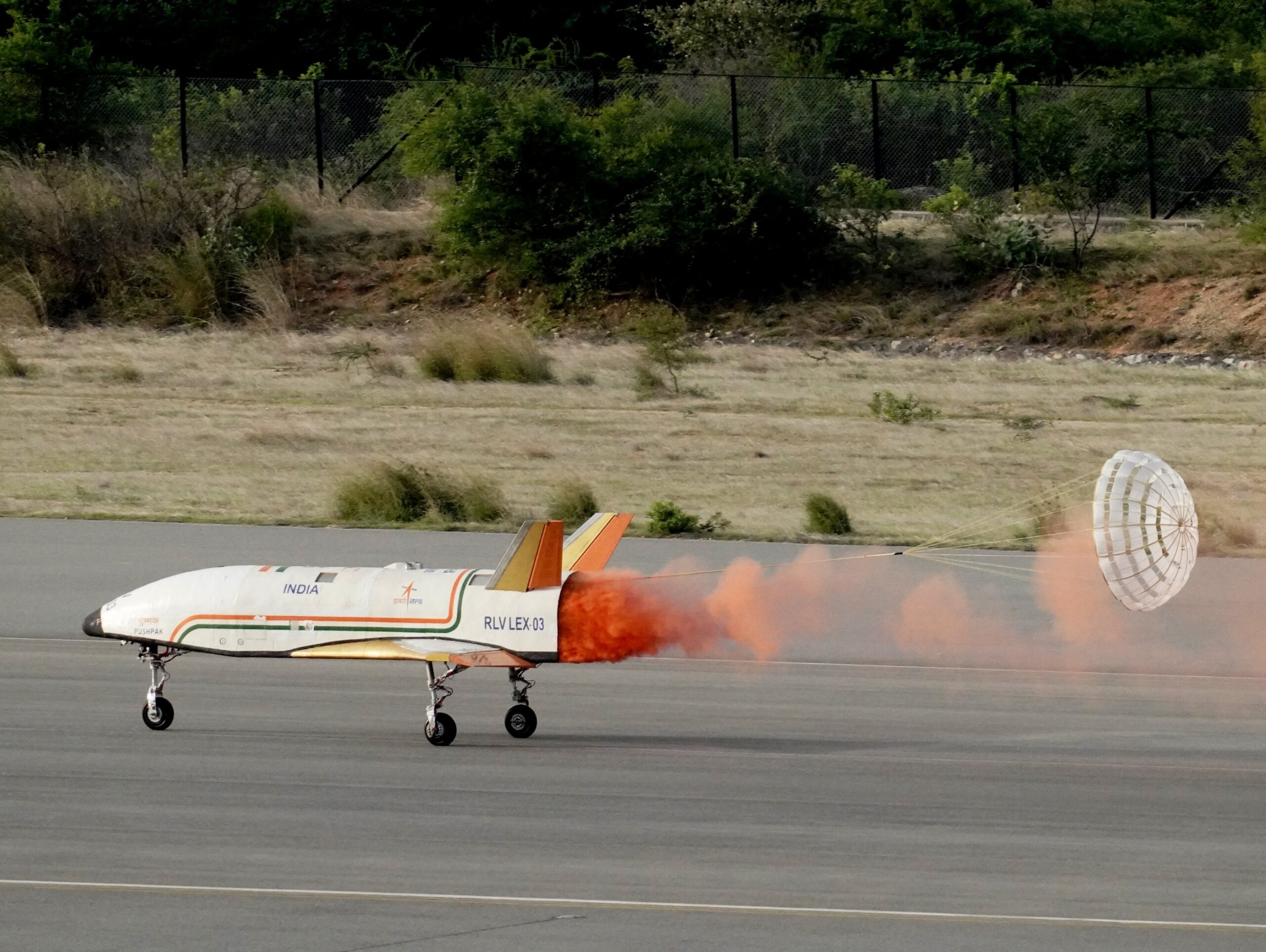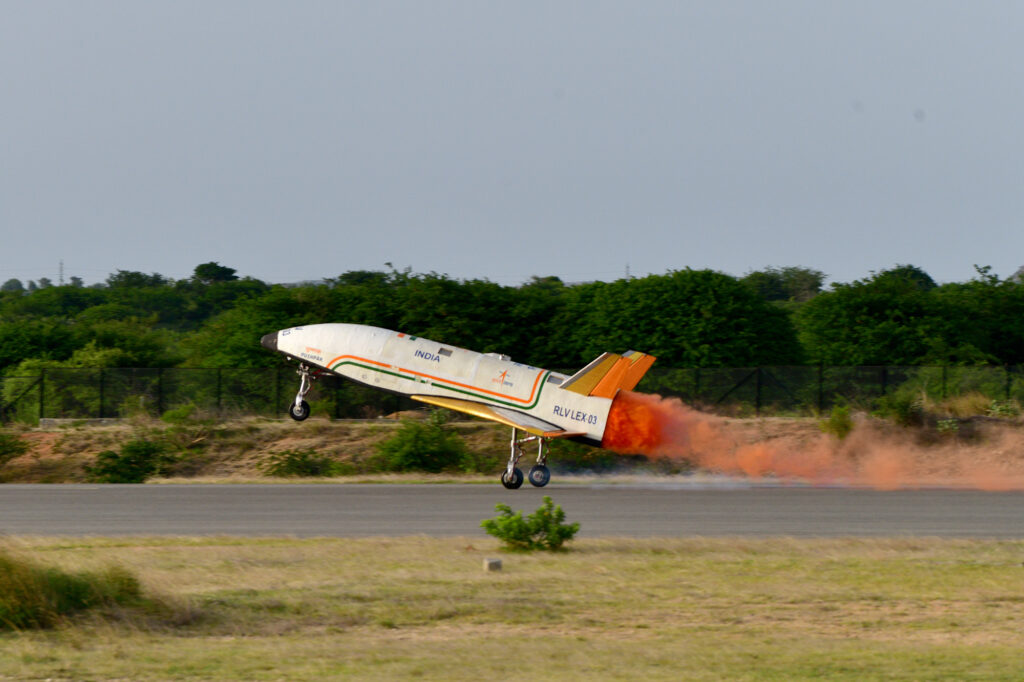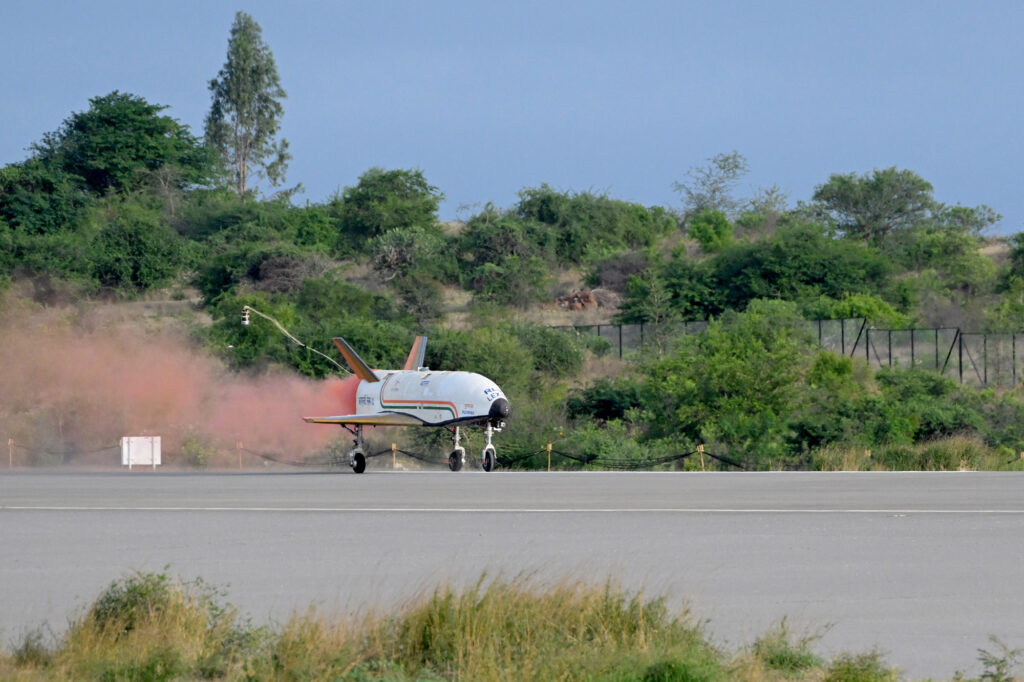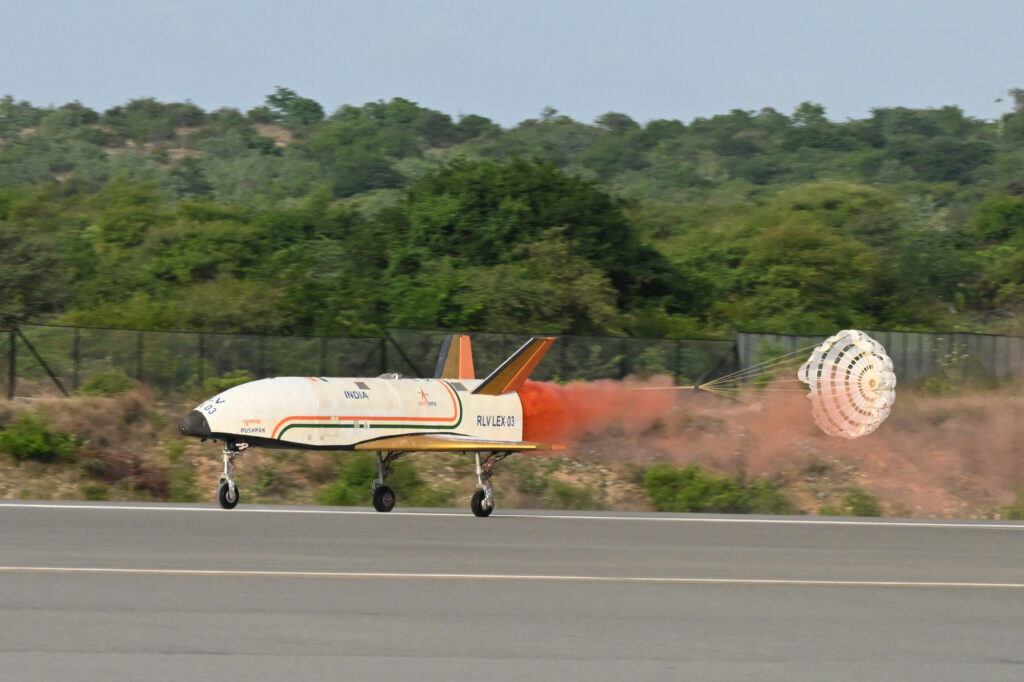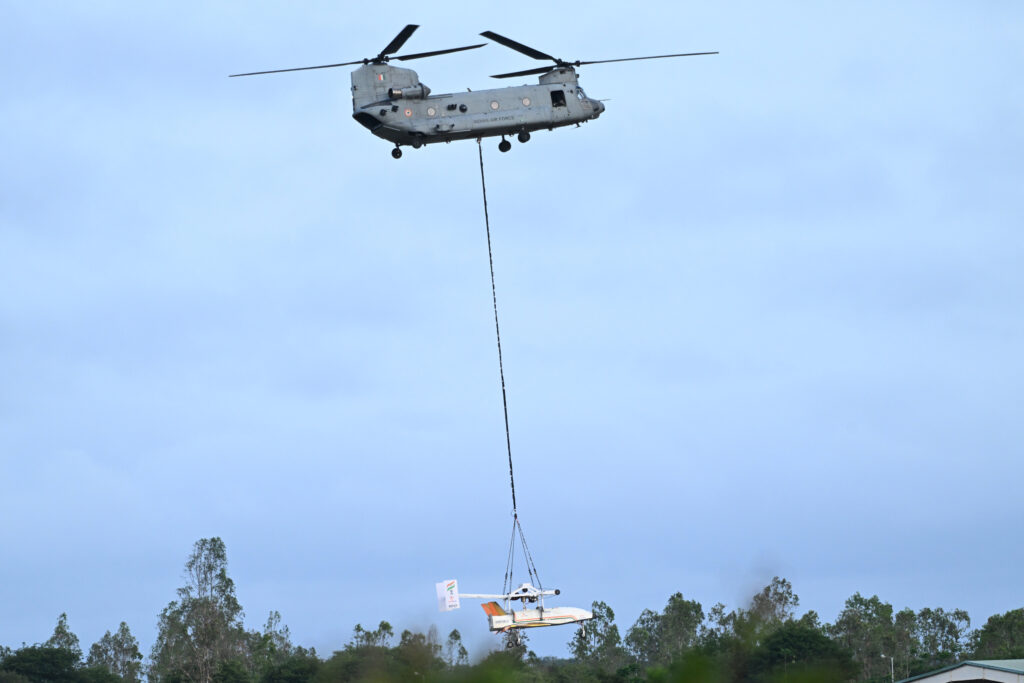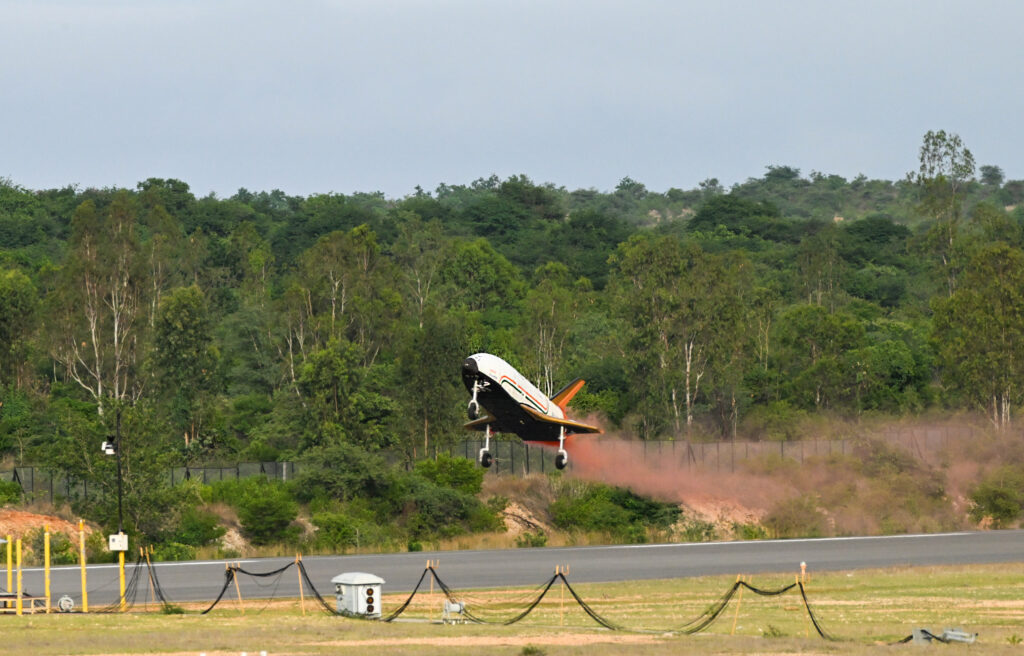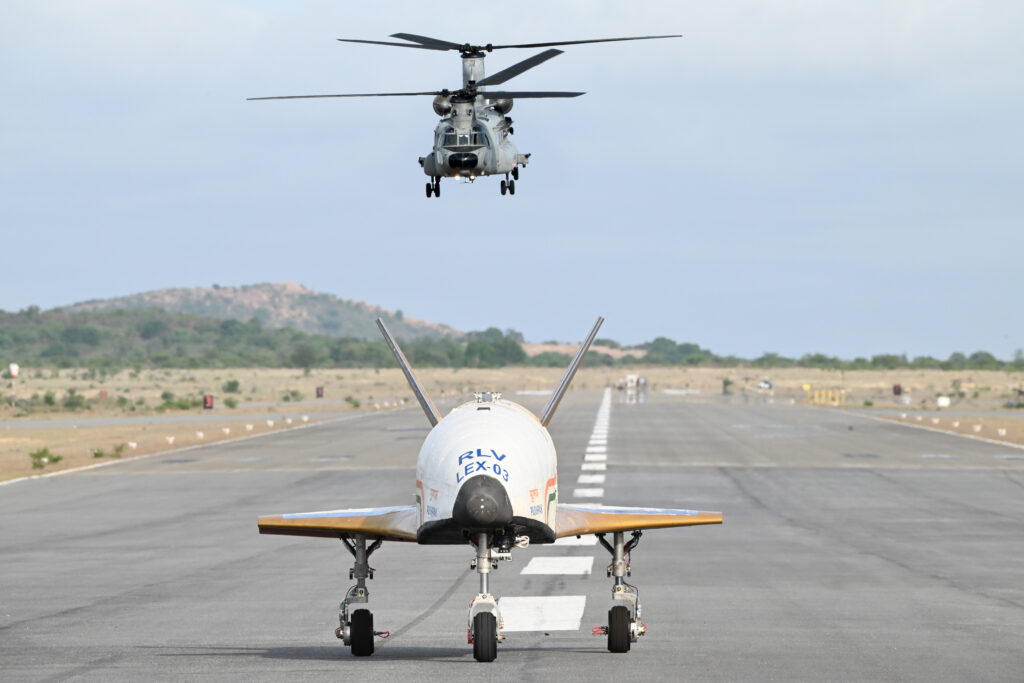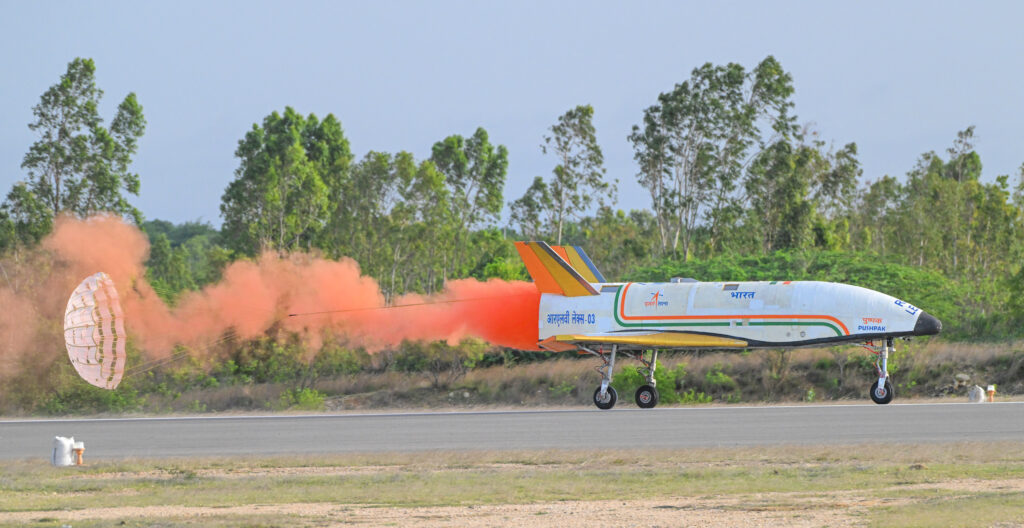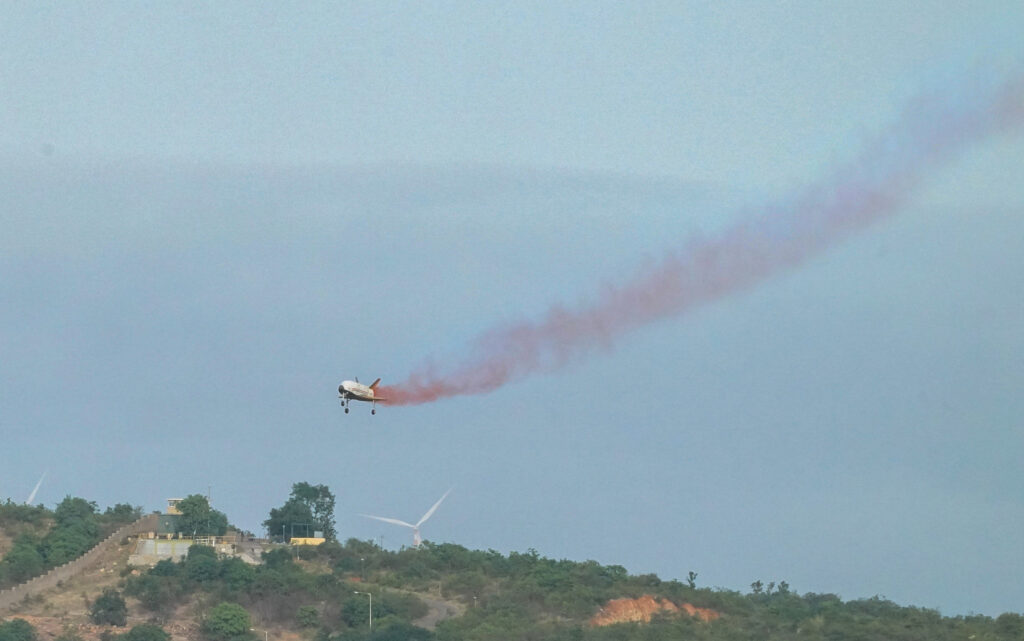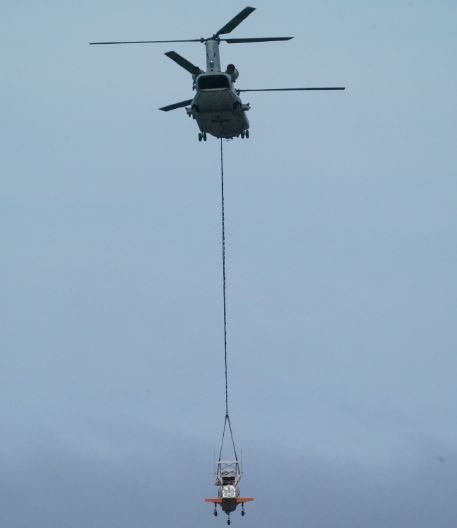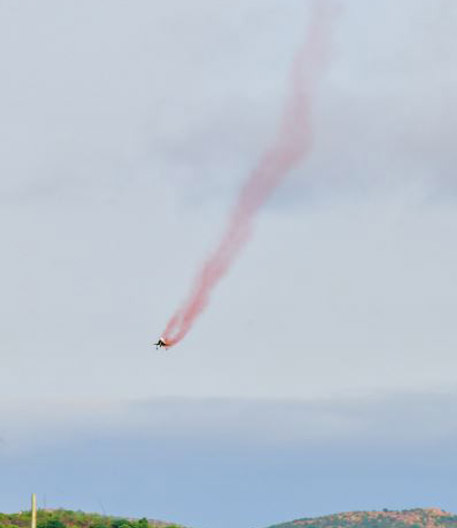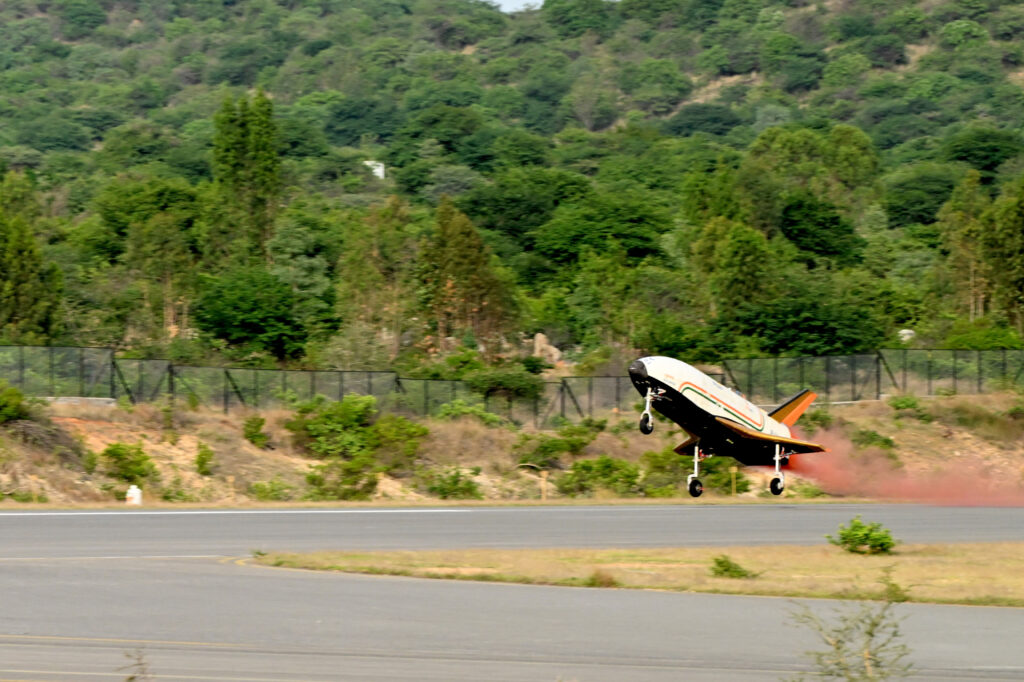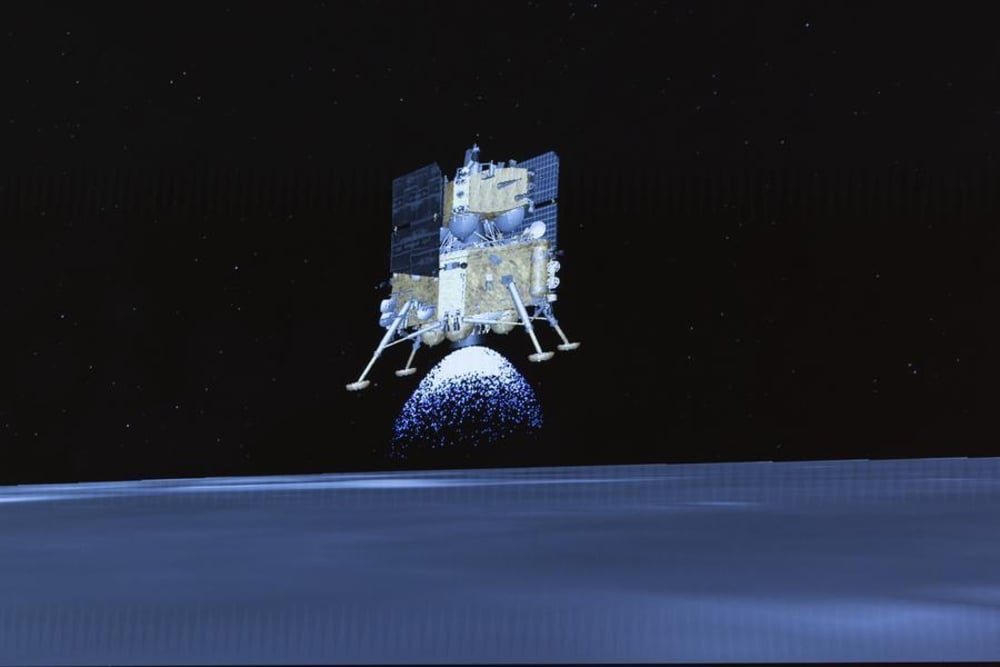The third landing experiment of the reusable Launch Vehicle (RLV-LEX-03) named Pushpak was accomplished by ISRO (Indian Space Research Organization) on Sunday. On June 23, 2024, the ISRO announced that the test was conducted at the Aeronautical Test Range (ATR) located in Chitradurga, Karnataka. It was a hat-trick for ISRO in RLV LEX!
“Following the success of the RLV LEX-01 and LEX-02 missions, RLV LEX-03 re-demonstrated the autonomous landing capability of the RLV under more challenging release conditions (cross range of 500 m against 150 m for LEX-02) and more severe wind conditions,“ said ISRO in a press release.
Pushpak executed a precise horizontal landing along with its advanced autonomous capabilities under challenging conditions. Now, the orbital reusable vehicle is the next step for ISRO. Pushpak autonomously executed cross-range correction maneuvers. It approached the runway and performed a precise horizontal landing at the runway centerline.
Owing to this vehicle’s low lift-to-drag ratio aerodynamic configuration, the landing velocity exceeded 320 km/h. The velocity of the vehicle was reduced to nearly 100 km/h using its brake parachute. After that, the landing gear brakes were employed for deceleration and stop on the runway. Pushpak utilizes its rudder and nose wheel steering system to autonomously maintain a stable and precise ground roll along the runway.
The approach and landing interface and high-speed landing conditions for a vehicle returning from space were simulated by the mission. Thus, ISRO’s expertise in acquiring the most critical technologies is reaffirmed. Led by VSSC (Vikram Sarabhai Space Center), the mission was a collaborative effort involving multiple ISRO centers SAC, IISU, ISTRAC, SDSC-SHAR, with significant support from the IAF (Indian Air Force), ADE (Aeronautical Development Establishment), and a host of other agencies.
Similar Posts
The team was congratulated by the ISRO chairman S. Somnath. Dr. S. Unnikrishnan Nair, Director of VSSC, emphasized that this consistent success boosts ISRO’s confidence in the critical technologies essential for future orbital re-entry missions. J. Muthupandian is the mission director, and B. Karthik is the Vehicle Director for this successful mission.
ISRO’s RLV-LEX-03 Images,Photo Source : ISRO
To put it simply, ISRO has successfully completed its RLV technology demonstration through the LEX trio. It is ISRO’s hat-trick in Pushpak safe landing. Its focus now is on orbital entry trials.
